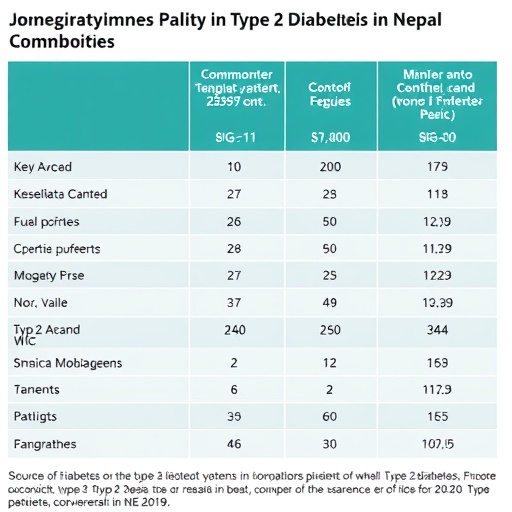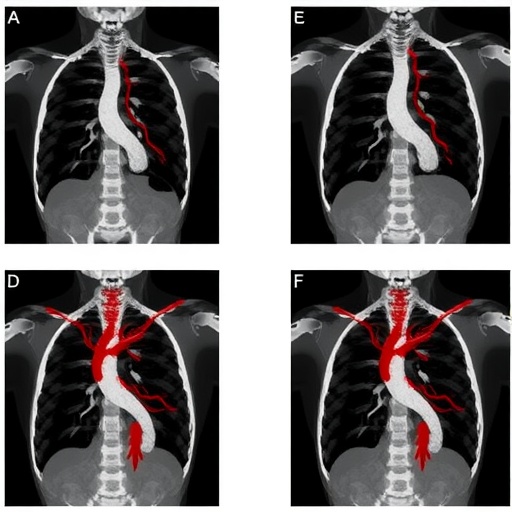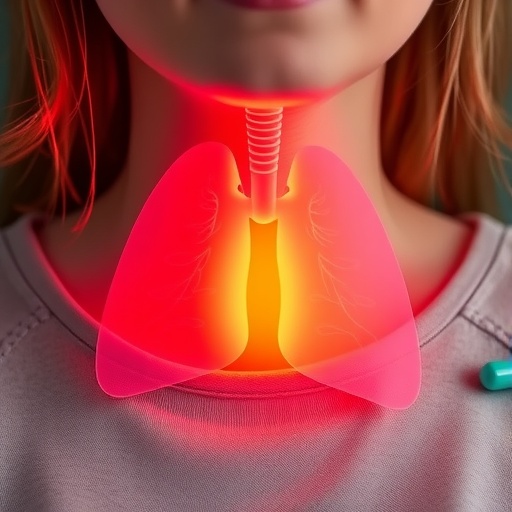In recent years, the global health community has increasingly focused on the intersection of diabetes and other health conditions, particularly comorbidities. A pivotal study conducted by Chaurasia et al. sheds light on the prevalence and determinants of comorbidities among patients with type 2 diabetes mellitus in Nepal. This cross-sectional study reflects a significant public health concern, as the interaction between diabetes and other health issues can exacerbate health outcomes and complicate treatment protocols. As diabetes becomes more prevalent worldwide, understanding its ramifications in specific populations, such as those in Nepal, is crucial.
The urgency of addressing diabetes complications is underscored by the alarming rate at which type 2 diabetes is spreading. With the increasing urbanization and lifestyle changes in Nepal, the burden of diabetes is rising among the population. Chaurasia et al. rigorously examined this concern, highlighting not only how many patients are affected by diabetes but also the myriad of additional health problems that accompany this disease. Comorbidities, such as hypertension, obesity, and hyperlipidemia, are closely associated with diabetes and can lead to serious health complications, including cardiovascular disease and kidney failure.
It is vital to consider that the social determinants of health significantly affect diabetes management and its comorbidities. The study’s findings indicate that factors such as socioeconomic status, education level, and access to healthcare resources play integral roles in the prevalence of comorbidities among diabetic patients. For instance, those with lower education levels may lack the necessary understanding of diabetes management, leading to poor health outcomes. This indicates a need for targeted education and resources, particularly in vulnerable communities, to mitigate these risks effectively.
Moreover, lifestyle choices play a crucial role in the prevalence of diabetes and its comorbidities. The research highlights that dietary habits, physical activity levels, and smoking behaviors contribute significantly to the health status of individuals with diabetes. For example, sedentary lifestyles and poor dietary choices can exacerbate insulin resistance and worsen overall metabolic health, paving the way for additional complications. The findings make a convincing case for incorporating lifestyle interventions as part of diabetes care. Such initiatives could yield remarkable improvements in patient outcomes, enabling individuals to live healthier, more fulfilling lives.
Furthermore, cultural factors must be considered in the management of diabetes and its associated conditions. The researchers noted that traditional beliefs and practices could influence health-seeking behaviors and adherence to medical advice, which in turn affects the prevalence of comorbidities. Consequently, public health interventions should be culturally sensitive and adaptable, taking into account the values and beliefs of the local population to improve engagement and compliance. The integration of traditional health practices with modern medical advice could potentially enhance patient outcomes and streamline management strategies.
The researchers also emphasized the importance of a multidisciplinary approach in managing comorbid conditions among diabetes patients. By collaborating with a range of healthcare professionals, including endocrinologists, dietitians, and mental health specialists, a holistic care model could be established that addresses the multifaceted nature of diabetes. This approach would not only focus on glycemic control but also on weight management, cardiovascular health, and mental well-being — all critical components of comprehensive diabetes care.
While the findings from the study are illuminating, they also raise vital questions about the future direction of diabetes management in Nepal and similar contexts. How can healthcare systems evolve to effectively address the growing dual challenge of diabetes and its comorbidities? Policy and health systems must adapt to better accommodate the unique challenges faced by those living with chronic diseases. Investment in resources and infrastructure for diabetes care could facilitate better management of comorbid conditions and ultimately reduce the overall burden on the healthcare system.
The implications of this research are far-reaching, not only for Nepal but also for other countries facing similar challenges with diabetes. As diabetes continues to become a global health crisis, the data gathered by Chaurasia and colleagues will serve as a vital reference point for public health initiatives worldwide. Reforms in diabetes care must be backed by robust research that informs practices and policy.
In conclusion, the study on the prevalence and determinants of comorbidities among patients with type 2 diabetes in Nepal presents a critical insight into the management of chronic illness and highlights the necessity of considering both medical and socio-cultural factors in treatment regimens. As diabetes prevalence escalates, research like this will play a crucial role in shaping healthcare strategies aimed at reducing the negative impact of this pervasive condition.
This study emphasizes the urgent need for enhanced awareness and targeted interventions to combat the growing epidemic of type 2 diabetes and its associated comorbidities. The findings advocate for an integrated approach that combines clinical care with community education and support, thereby fostering a healthier future for patients living with diabetes worldwide.
Through collaborative efforts that combine research, policy reform, and community engagement, the fight against diabetes and its complications can gain momentum. The insights offered by Chaurasia et al. are pivotal as we navigate the complexities of chronic disease management, striving for better health outcomes and improved quality of life for individuals across the globe.
Subject of Research: Prevalence and determinants of comorbidities among patients with type 2 diabetes mellitus in Nepal.
Article Title: Prevalence and determinants of comorbidities among patients with type 2 diabetes mellitus in Nepal: a cross-sectional study.
Article References:
Chaurasia, N.K., Mothashin, M. & Hossain, M.G. Prevalence and determinants of comorbidities among patients with type 2 diabetes mellitus in Nepal: a cross-sectional study.BMC Endocr Disord 25, 247 (2025). https://doi.org/10.1186/s12902-025-02068-y
Image Credits: AI Generated
DOI: https://doi.org/10.1186/s12902-025-02068-y
Keywords: Diabetes, Type 2 diabetes mellitus, Comorbidities, Nepal, Health determinants, Public health.
Tags: Chaurasia study on diabetescomorbidities in type 2 diabetesdiabetes prevalence in Nepaldiabetes treatment challenges in Nepalhealth complications of diabeteshyperlipidemia and diabeteshypertension and diabetes relationshiplifestyle changes and diabetesobesity in diabetic patientspublic health concerns diabetessocial determinants of diabetes healthurbanization and diabetes risk





